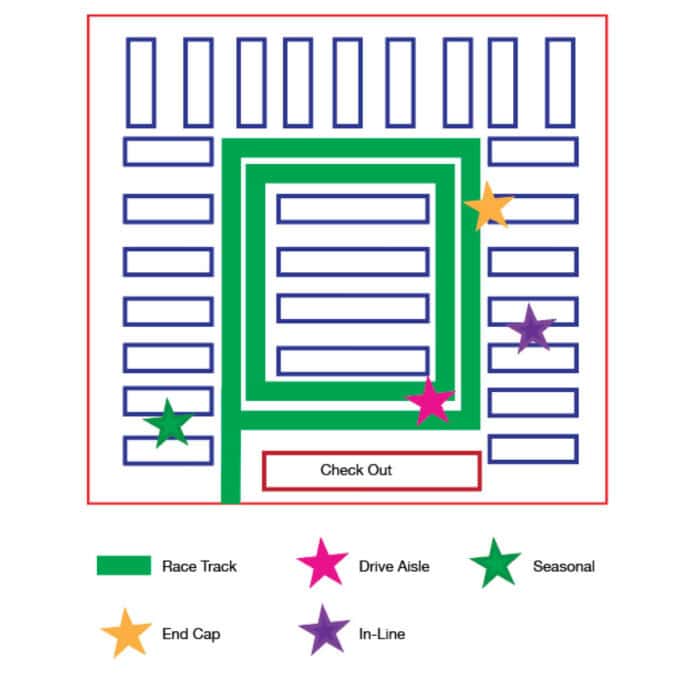In retailer terms, the layout of the store has terminology that is used behind the scenes. It's based on consumer behaviour of following a path and directing people's attention.

The Racetrack
The racetrack is the main walkway surrounding the store. It's usually more expansive, and with aisles on both sides, a person can wander the entire store. Usually, a consumer will find their way back to the racetrack, continue the path, or do a complete walk around to see what's new before venturing off. The consumer always starts in the racetrack, which can have significant aisles if the store layout is enormous.
The Drive Aisle
Usually, the racetrack has bins, pop-up displays, and shelves in the middle of the path. The store is driving your attention to look at the bins, and usually, there are sales, popular products or brand-new items that just landed in the store. They can also drive an impulsive, unplanned purchase.
The End Cap
End caps are prime real estate in a product section. The end of the aisle faces the racetrack and is virtually seen by most people who wander the store unless the person has a direct mission and just shortcuts to what they want and leaves. New products and sales appear on the end caps to get your attention. Products on an end cap could be seasonal and never stocked full-time in the store.
End caps can also be used to test new products in a store to see the interest level of the consumers for a specific location.
In-Line Aisles
In line is when a product is in an aisle with a permanent shelf space. The shelf space may be temporary based on season, and a regular item will be carried in stock until they decide to change it over.
For manufacturers testing products in a retail store, success is achieved when a product is placed inline immediately or after testing.
Seasonal Section
Seasonal sections are usually near the front of the retail experience as the shelf life is limited. End caps can also be used if an item is seasonal in a specific department.
Clearance
The clearance is like milk or bread in a grocery store: near the back and the longest to get to. It forces the consumer to walk to areas in the store to pass all of the current stock. It could be in each section as stock is running out, but it usually piles up in one section when it gets low.


Leave me your thoughts...